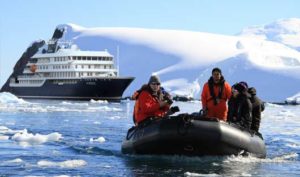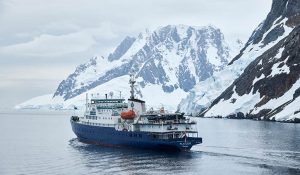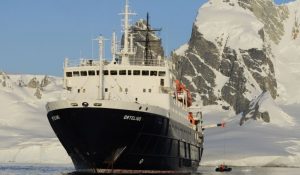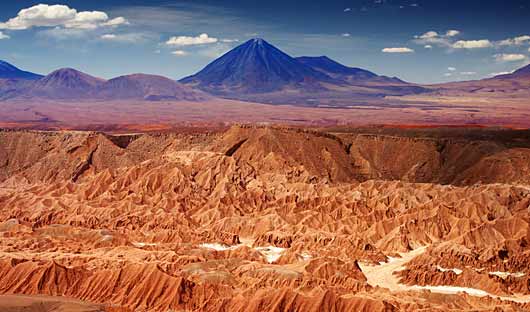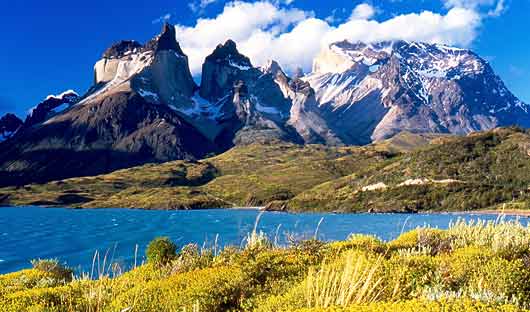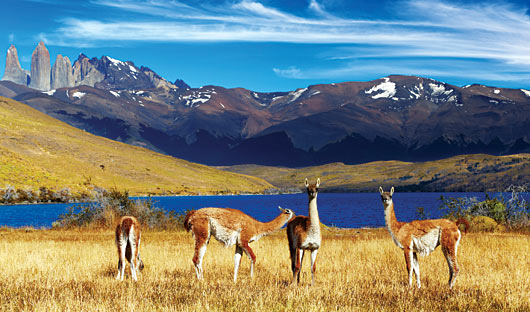FALKLANDS, SOUTH GEORGIA AND ANTARCTICA
__________________
21 DAYS
ITINERARY SUMMARY
| Day | Place | Highlights |
|---|---|---|
| Day 1 | Embarkation Puerto Madryn | Golfo Nuevo |
| Days 2 & 3 | At Sea | South Atlantic Ocean towards the Falkland Islands |
| Days 4 & 5 | Falkland Islands | Four species of penguins, black-browed albatross, numerous bird species and dramatic Falklands scenery |
| Days 6 & 7 | At Sea | Southern Ocean |
| Days 8 - 11 | South Georgia | Millions of penguins, hundreds of thousands seals |
| Days 12 - 14 | Scotia Sea and South Orkney Archipelago | Albatross, prions, south polar skuas and whales, Orcadas Base |
| Days 15 - 18 | Antarctic Peninsula | Gentoo, Adelie & chinstrap penguins, seals and dramatic scenery |
| Days 19 & 20 | At Sea – Beagle Channel | Cross the Drake Passage |
| Day 21 | Disembark Ushuaia | Farewell your fellow expeditioners |
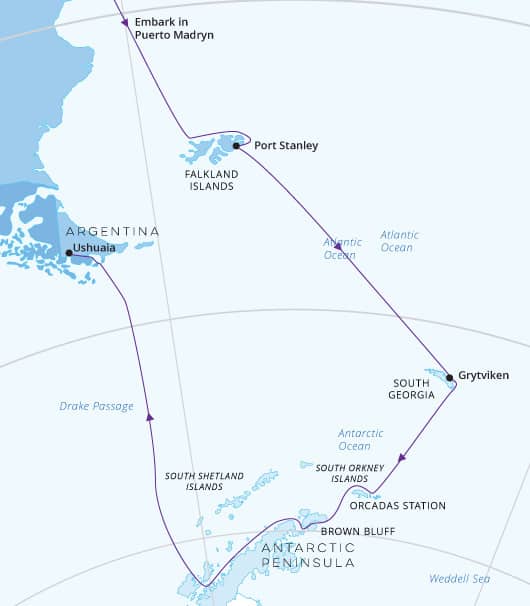
SHIPS OFFERING THIS ITINERARY
HONDIUS
The Hondius (176 guests) takes her maiden voyage in 2019. She has an Ice class rating of 6, the most advanced to date. The Hondius will offer deluxe accommodations for a total 176 guests. One deck has been entirely reserved for lectures and presentations in one large observation lounge. The ship’s main focus remains discovery, taking advantage of wildlife opportunities and the related shore activities. Efficient zodiac embarkation is guaranteed with two separate gangways and in addition a zodiac embarkation indoor-platform which can also be used for special activities such as kayaking.
PLANCIUS
The Plancius accommodates up to 108 passengers in 53 passenger cabins all with private ammenitiies. Built in 1976 as an oceanographic research vessel for the Royal Dutch Navy she sailed for the Navy until 2004 when she was used as an expedition vessel. Completely rebuilt in 2009 and later upgrades in 2019, the complies with the latest SOLAS-regulations. Offering a restaurant/lecture room on deck 3, a spacious observation lounge with large windows and a bar on deck 5 and a library on deck 5there is no shortage of places to relax. There are large open deck spaces on the Plancius, especially on Deck 4 with full walk-around possibilities for optimal wildlife spotting and enjoying the scenery. The Plancius carries 10 Mark V zodiacs, with 40 HP 4-stroke outboard engines and 2 gangways on the starboard side, guaranteeing a swift zodiac operation. Whilst the Plancius is comfortable and well equipped, she is in no way a luxury vessel. The focus is in spending as much time on shore as possible with an exploratory educational travel programme with 8 highly knowledgeable expedition staff.
ORTELIUS
The Ortelius was originally the Marina Svetaeva. Built in Gdynia, Poland in 1989, it served as a special-purpose vessel for the Russian Academy of Science. Later it was re-flagged and renamed after the Dutch/Flemish cartographer Abraham Ortelius, who in 1570 published the first modern world atlas: Theatrum Orbis Terrarum or Theatre of the World. The Ortelius can accommodate 108 guests and has an abundance of open-deck spaces for watching wildlife and the impressive scenery as you sail past. She also has the highest ice-class notation (UL1, equivalent to 1A) making her perfect for polar expeditions.
Day 1 Embarkation in Puerto Madryn
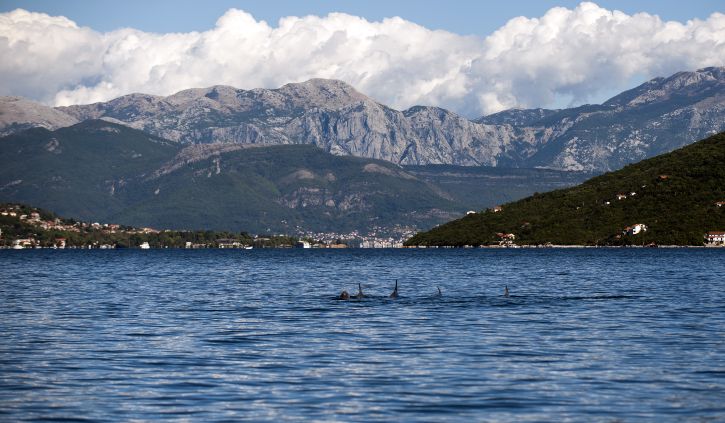
Embark from Puerto Madryn in the afternoon and set sail for the Falkland Islands. You will have a good chance of spotting southern right whales as you cruise along Golfo Nuevo. Settle into your cabin, meet your fellow travellers and expedition team and get excited for your adventure ahead.
Day 2-3 At Sea

Head out on deck to try and spot passing dolphins and whales. The expedition team will be conducting presentations and workshops, and you will have some time to enjoy the onboard recreation facilities. Several species of bird follow the vessel southeast, such as albatrosses, storm petrels, shearwaters, and diving petrels.
Days 4-5 Falkland Islands

The Falkland (Malvinas) Islands offer an abundance of wildlife that is easily approachable, though caution is always advised. These islands are largely unknown gems, the site of a 1982 war between the UK and Argentina. Not only do various species of bird live here, but chances are great you’ll see both Peale’s dolphins and Commerson’s dolphins in the surrounding waters.
During this segment of the voyage, you may visit the following sites:
Steeple Jason – Here you will find the world’s largest black-browed albatross colony (roughly 113,000). Steeple Jason is a wild and rarely visited island buffeted by wind and waves. Weather and swell conditions dictate the journey here.
Carcass Island – Despite its name, this island is pleasantly rodent-free and filled with birdlife including breeding Magellanic penguins, gentoos, waders and passerine birds (including Cobb’s wrens and tussock-birds).
Saunders Island – On Saunders Island you can see the black-browed albatross along with breeding imperial shags and rockhopper penguins. King penguins, Magellanic penguins, and gentoos are also found here.
The capital of the Falklands and center of its culture, Port Stanley has some Victorian-era charm: colorful houses, well-tended gardens, and English-style pubs are all to be found here. You can also see several century-old clipper ships nearby, silent witnesses to the hardships of 19th century sailors. The small but interesting museum is also worth a visit, covering the early days of settlement up to the Falklands War. Approximately 2,100 people live in Port Stanley. Feel free to wander at will, though be aware that admission fees to local attractions are not included in the voyage.
Days 6-7 At Sea
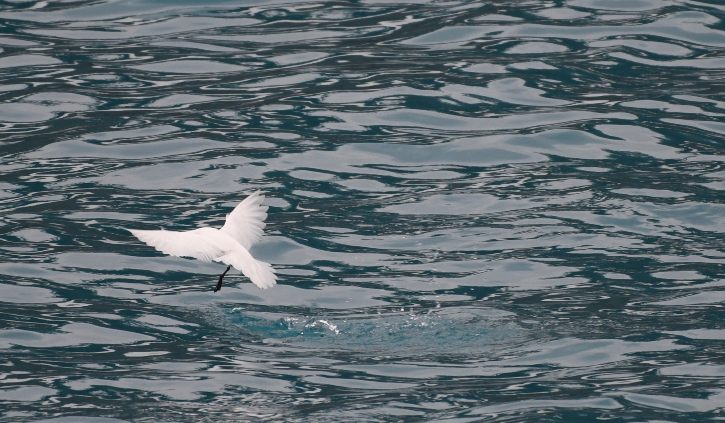
The ship will head east toward South Georgia. You will cross the Antarctic Convergence which is a biological boundary of the Southern Ocean, the temperature cools considerably within the space of a few hours, and nutritious water rises to the surface of the sea due to colliding water columns. This phenomenon attracts a multitude of seabirds near the ship, including several species of albatross, shear waters, petrels, prions, and skuas. The expedition team will continue the educational program and you can learn about the history of South Georgia and the wildlife found on South Georgia.
Days 8-11 South Georgia

South Georgia is renowned for the sub-antarctic wildlife viewing on a beautiful landscape. The islands are home to 100 million seabirds, including numerous species of albatross, penguins, prions, petrels, and terns. On beaches such as those at Salisbury Plain and St. Andrews Bay, over 100,000 elephant seals and three million fur seals jostle for space among penguins including king penguins and macaroni penguins.
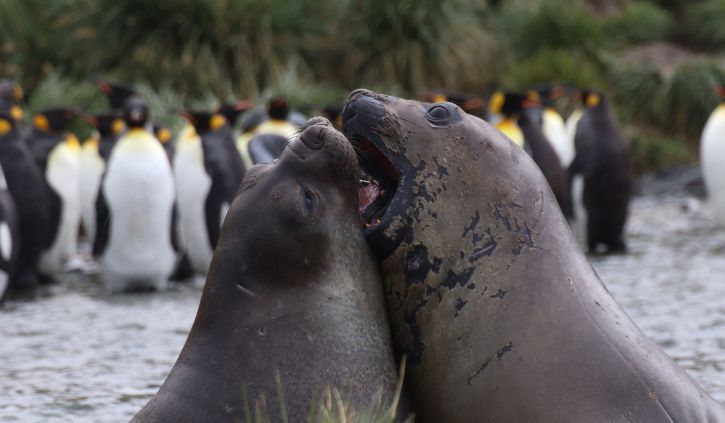
Sites you may visit include:
Prion Island – This location is closed during the early part of the wandering albatross breeding season (November 20 – January 7). The previous summer’s wandering albatross chicks are almost ready to fledge, and adults are seeking out their old partners after a year and a half at sea.
Salisbury Plain, St. Andrews Bay, Gold Harbour – These sites not only house the three largest king penguin colonies in South Georgia, they’re also three of the world’s largest breeding beaches for southern elephant seals. Only during this time of year do they peak in their breeding cycle. Watch the four-ton bulls keep a constant vigil (and occasionally fight) over territories where dozens of females have just given birth or are about to deliver. You can also see a substantial number of Antarctic fur seals here during the breeding season (December – January).
Fortuna Bay – Near beaches inhabited by various penguins and seals, you have the chance to follow the final leg of Shackleton’s route to the abandoned whaling village of Stromness. This path cuts across the mountain pass beyond Shackleton’s Waterfall, and as the terrain is partly swampy, be prepared to cross a few small streams.
Grytviken – In this abandoned whaling station, king penguins walk the streets and elephant seals lie around like they own the place – because they basically do. Here you might be able to see the South Georgia Museum as well as Shackleton’s grave.
Days 12-14 Southern Ocean and South Orkney
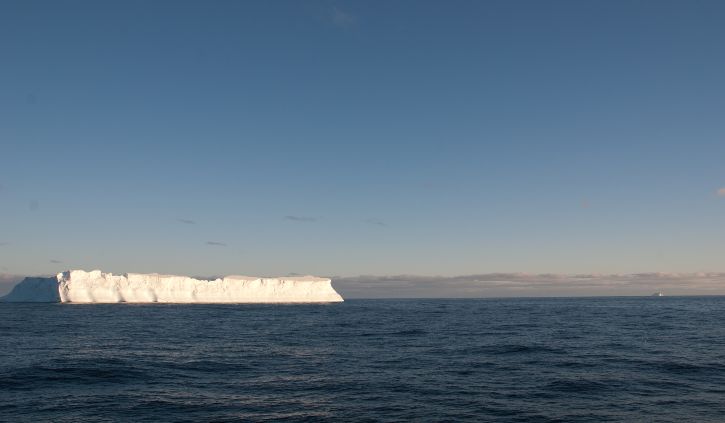
While you are at sea enjoy presentations from the expedition team on Antarctic wildlife, history and geology preparing you for the meeting with wild spaces of the Seventh Continent. Depending on the conditions, you might visit Orcadas Base, an Argentine scientific station on Laurie Island in the South Orkney archipelago. The personnel here will happily show you their facility, where you can enjoy expansive views of the surrounding glaciers. If a visit isn’t possible, you may instead land in Signy Island’s Shingle Cove.
Days 15-18 Antarctic Peninsula & South Shetlands
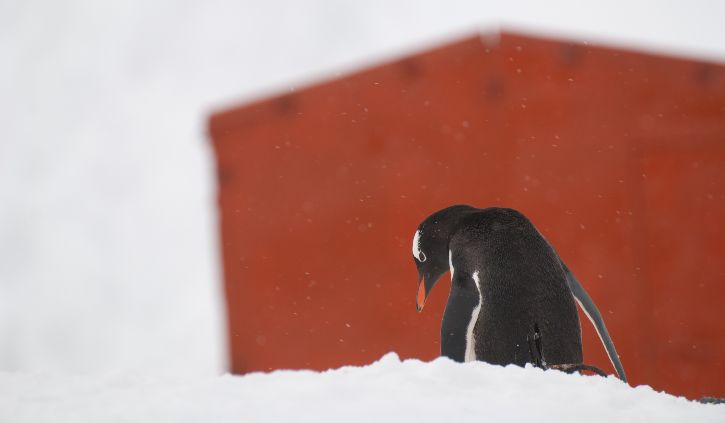
If the ice conditions permit, you now sail into the Weddell Sea. Here colossal tabular icebergs herald your arrival to the eastern side of the Antarctic Peninsula. Paulet Island, with its large population of Adélie penguins, is a possible stop. You might also visit Brown Bluff, located in the ice-clogged Antarctic Sound, where you could get the chance to set foot on the Antarctic Continent itself. You may be able to visit Elephant Island (depending on the weather) and head into the Bransfield Strait, between South Shetland Island and the Antarctic Peninsula. Here you can attempt to access the Antarctic Sound from the northwest.
The volcanic islands of the South Shetlands are windswept and often cloaked in mist, but they nonetheless make for an interesting excursion. A wide variety of flora (mosses, lichens, flowering grasses) and fauna (gentoo penguins, chinstrap penguins, southern giant petrels) live here. Chinstrap penguins and Weddell seals often haul out onto the beach near Cámara Base, an Argentine scientific research station on Half Moon Island.
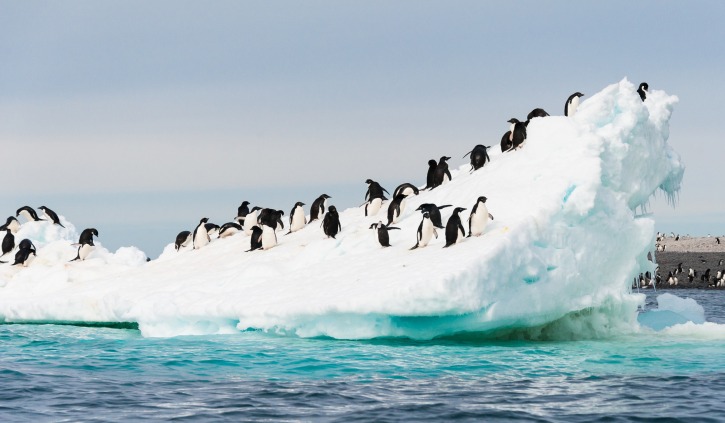
On Deception Island, the ship plunges through Neptune’s Bellows and into the flooded caldera. Here you can find hot springs, an abandoned whaling station, and thousands of cape petrels. A number of kelp gulls, brown skuas, south polar skuas, and Antarctic terns can be spotted too. Wilson’s storm petrels and black-bellied storm petrels also nest in the ruins of the whaling station in Whalers Bay. As an alternative, you can take part in activities near Telefon Bay, further inside the caldera.
This extended voyage gives you the chance to sail even farther down the icy coast of the western Antarctic Peninsula. In the Gerlache Strait are several opportunities for great landings where you might set foot on the Antarctic Continent, surrounded by an epic landscape of alpine peaks and mammoth glaciers calving at sea level. Gentoo penguins, leopard seals, Weddell seals, humpback whales, and minke whales are often seen here. The breathtaking scenery continues in the southern Gerlache Strait, and if ice conditions allow, we may even reach Lemaire Channel. Conditions on the Drake Passage determine the exact time of departure.
Days 19-20 Crossing the Drake Passage
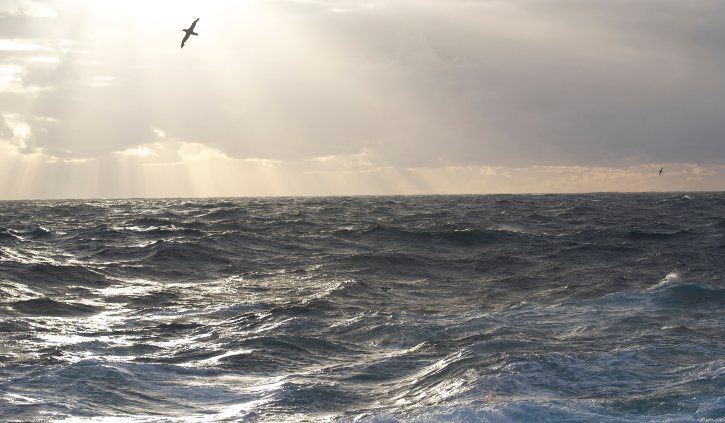
As you cross the Drake Passage you will have time to reflect on an incredible voyage with your new friends. Sea birds will follow the ship and the education program will keep you entertained.
Day 21 Ushuaia
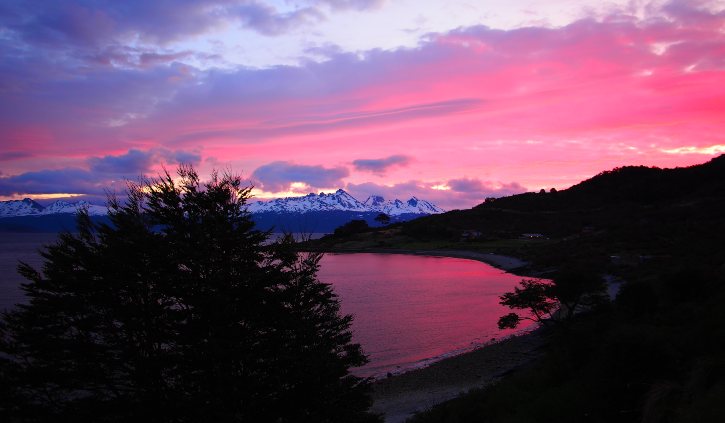
After breakfast say farewell in the city of Ushuaia, the southern most city in the world. A group transfer is provided to the airport or to the town centre if you wish to spend more time here.
EXTEND YOUR TRIP TO PATAGONIA
To make the most of your time in South America we can tailor a holiday to Patagonia to suit your voyage dates. If you have a bit more time we can create a tailor-made itinerary to some of the highlights of South America. Take a look at the Patagonia sample itineraries below and contact us to begin creating your perfect holiday.


